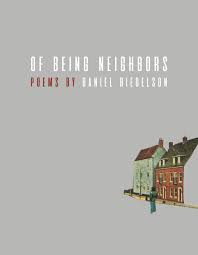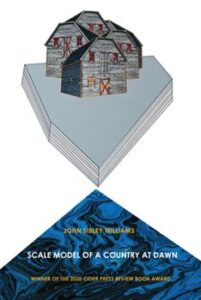Reviewed by Maggie Rue Hess | August 31, 2021
Future Cycle Press, April 2021
Paperback, 58 pages, $15.95
Reminding us that to turn your eyes away from suffering is to turn away from compassion, Aruni Kashyap wrote his unflinching collection of poems There is No Good Time for Bad News about the largely undocumented insurgency within Assam. This 1979 conflict left the people of India’s Northeast State devastated for generations, regardless of which side they aligned with. This collection whirls through a chorus of voices, featuring female perspectives in particular to draw attention to the sordid tortures inflicted on their bodies and families. Images populate the collection, filling the pages with artifacts and debris alike. Kashyap notes the purpose behind the multitude of perspectives he channels: “These poems take a look at this violent period and reflect on the consequences of prolonged violence on people. Revisiting India’s birth as a modern democracy, zooming through wars, protest marches, and conflicts, the poems tell us what it meant for me, my community, and the common people to live under the scourge of violence.” This oracular tone sustains the weight of generational suffering clearly articulated by each speaker.
These poems catalogue lives designed and then disrupted. Most obviously, this is seen in “The House with a Thousand Novels,” which shares its title with one of Kashyap’s novels. Numerical precision vitalizes the description even as it undermines itself. Lines alternate between the impression of accuracy and second-guessing that accuracy, as in the lines, “This is a house with a thousand novels/(or more)./Every window or a room that mourns for a vent/treasures a story in it.” The interplay of certainty and uncertainty creates a storyteller’s sensibility for recollection, where details matter whether or not exactitude is possible.
A number of objects or descriptions reappear throughout the collection, denoting both their significance as well as memory’s pervasive nature for the traumatized. Readers encounter sweaters, ornaments, green flame, wooden almirah and termites, the river that carries the reflection of the sky and more – objects that haunt and awe. Sweaters signify familial care, ornaments become reminders of sacrifice, and the wooden almirah eaten by termites warns us of violation.
The titular poem, also the longest, is central to the collection, both in placement and in purpose. Kashyap personalizes specific disasters through his use of narrative, interspersing the tale of “the militant” throughout the greater story of the people, and this powerful thread begins with “There Is No Good Time for Bad News.” The speaker’s unique role – probably as a government official – is to inform next of kin when an insurgent’s body matches the description of their missing loved one. At times haunting, at times dreadfully factual, the poem describes his macabre ritual with one particular mother, who must repeatedly come to identify bodies, that do not turn out to be her son. The speaker is resigned to his role, stating, “Every year,/the number of bodies I see/are thousands and it doesn’t/matter when I deliver the news.” Yet by the poem’s end, the speaker finds that both he and the mother have been transformed by nineteen years of repeated loss and constant grief. It foreshadows resolution where many of the poems reveal a lack of closure.
Every poem feels like an act of trust and necessity without the guarantee of finality to the emotional upheaval they convey. Concluding the collection, “Freedom” declares, “Freedom, we are still waiting/for your arrival. Until then/you will be performed/and explained, because ancient stories/tell us: Definitions have always/belonged to the definers.” There is No Good Time for Bad News is not a definition, but it explains and performs what it must. Kashyap gives voice to a previously unheard pain, demonstrating how poets redeem us when recorded or reported history fails.
ABOUT THE AUTHOR
Aruni Kashyap is a writer and translator. His poetry collection, There is No Good Time for Bad News (Future Cycle Press, 2021) was a finalist for the 2018 Marsh Hawk Press Poetry Prize and 2018 Four Way Books Levis Award in Poetry. He is an Assistant Professor of Creative Writing at the University of Georgia, Athens whose short stories, poems, and essays have appeared in numerous publications. Learn more at his website: https://www.arunikashyap.com.
ABOUT THE REVIEWER
Maggie Rue Hess is a second-year MA student at the University of Tennessee-Knoxville. Her academic interests include 20th century American literature, poetry, and pedagogy.






